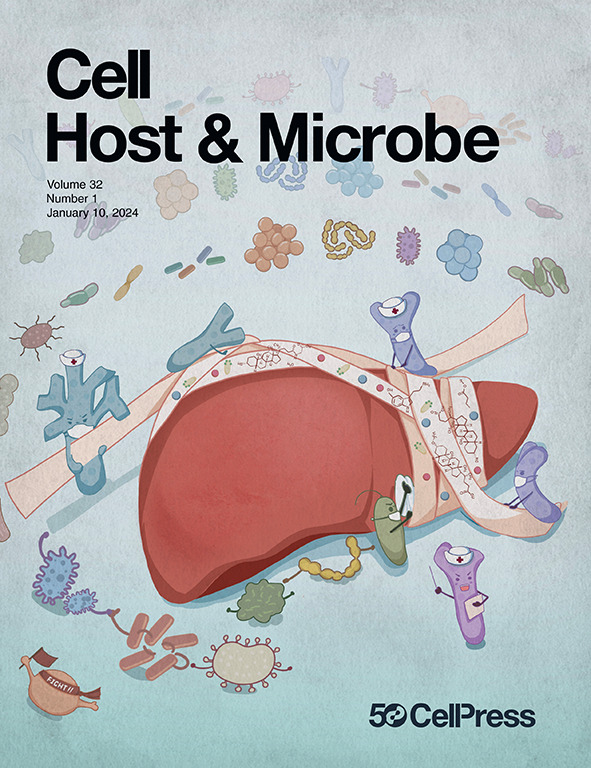Targeted inhibition of pathobiont virulence factor mitigates alcohol-associated liver disease
IF 18.7
1区 医学
Q1 MICROBIOLOGY
引用次数: 0
Abstract
Alcohol-associated liver disease poses a global health burden with high mortality. Imbalances in the gut microbiota are important for disease progression. Using metagenomic sequencing of fecal samples from a multicenter, international cohort of patients with alcohol-associated hepatitis, we found that the presence of virulence factor KpsM, encoded in the genome of Escherichia coli (E. coli), correlated with patient mortality. Functional studies using gnotobiotic mouse models and genetic manipulation of bacteria demonstrated that kpsM-positive E. coli exacerbate ethanol-induced liver disease. The kpsM gene mediates the translocation of capsular polysaccharides to the cell surface. This enables kpsM-positive E. coli to evade phagocytosis by the scavenger receptor Marco on Kupffer cells in the liver, leading to bacterial spread. Importantly, inhibiting kpsM-dependent capsules with the small molecule 2-(4-phenylphenyl)benzo[g]quinoline-4-carboxylic acid (C7) attenuated ethanol-induced liver disease in mice. We show that precision targeting of the virulence factor KpsM is a promising approach to improve outcomes of patients with alcohol-associated hepatitis.

靶向抑制病原菌毒力因子可减轻酒精相关性肝病
酒精相关的肝脏疾病造成了高死亡率的全球健康负担。肠道菌群的不平衡对疾病的进展很重要。通过对来自多中心国际酒精相关性肝炎患者队列的粪便样本进行宏基因组测序,我们发现大肠杆菌基因组编码的毒力因子KpsM的存在与患者死亡率相关。利用非生物小鼠模型和细菌基因操作进行的功能研究表明,kpsm阳性的大肠杆菌会加剧乙醇诱导的肝脏疾病。kpsM基因介导荚膜多糖向细胞表面的转运。这使得kpsm阳性的大肠杆菌能够逃避肝脏库普弗细胞上的清道夫受体Marco的吞噬,从而导致细菌传播。重要的是,用小分子2-(4-苯基苯基)苯并[g]喹啉-4-羧酸(C7)抑制kpsm依赖胶囊可减轻乙醇诱导的小鼠肝脏疾病。我们表明,精确靶向毒力因子KpsM是一种有希望改善酒精相关性肝炎患者预后的方法。
本文章由计算机程序翻译,如有差异,请以英文原文为准。
求助全文
约1分钟内获得全文
求助全文
来源期刊

Cell host & microbe
生物-微生物学
CiteScore
45.10
自引率
1.70%
发文量
201
审稿时长
4-8 weeks
期刊介绍:
Cell Host & Microbe is a scientific journal that was launched in March 2007. The journal aims to provide a platform for scientists to exchange ideas and concepts related to the study of microbes and their interaction with host organisms at a molecular, cellular, and immune level. It publishes novel findings on a wide range of microorganisms including bacteria, fungi, parasites, and viruses. The journal focuses on the interface between the microbe and its host, whether the host is a vertebrate, invertebrate, or plant, and whether the microbe is pathogenic, non-pathogenic, or commensal. The integrated study of microbes and their interactions with each other, their host, and the cellular environment they inhabit is a unifying theme of the journal. The published work in Cell Host & Microbe is expected to be of exceptional significance within its field and also of interest to researchers in other areas. In addition to primary research articles, the journal features expert analysis, commentary, and reviews on current topics of interest in the field.
 求助内容:
求助内容: 应助结果提醒方式:
应助结果提醒方式:


